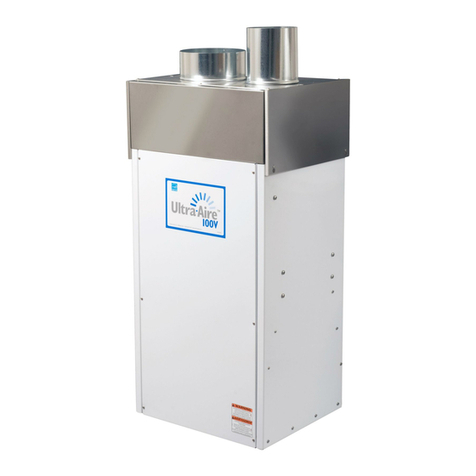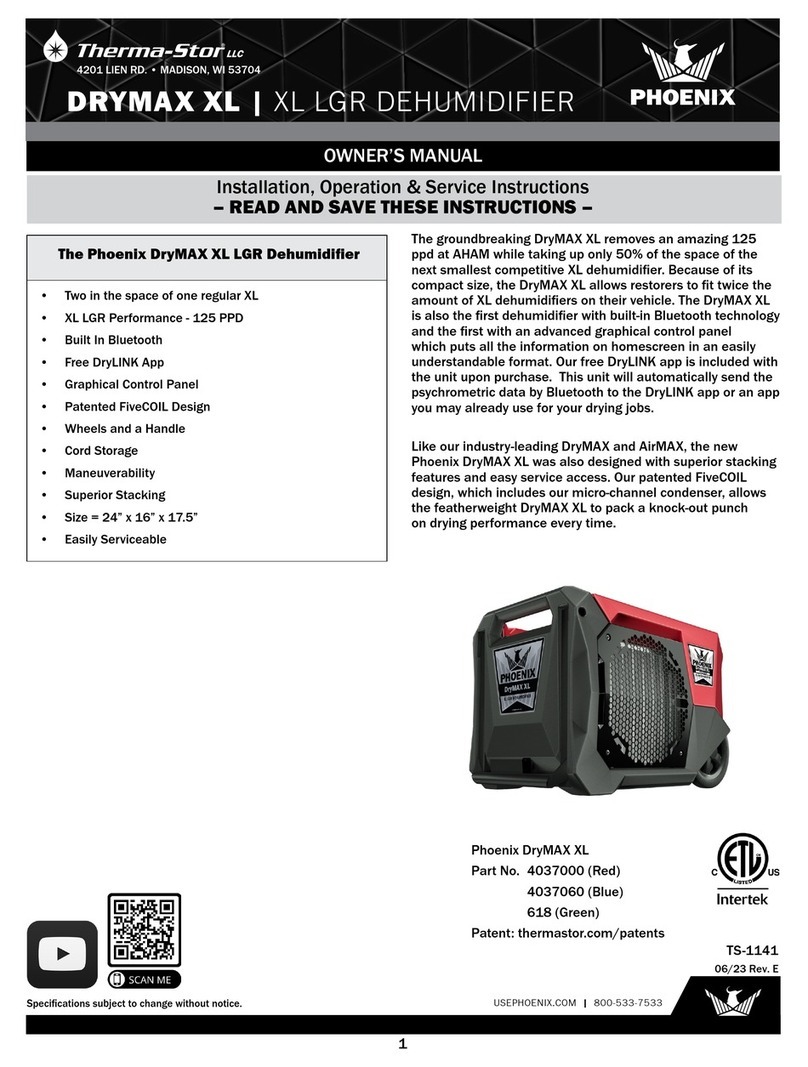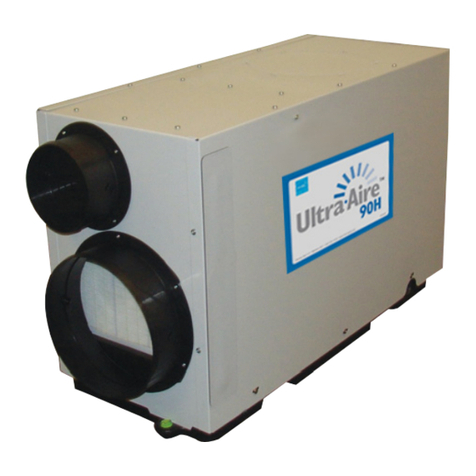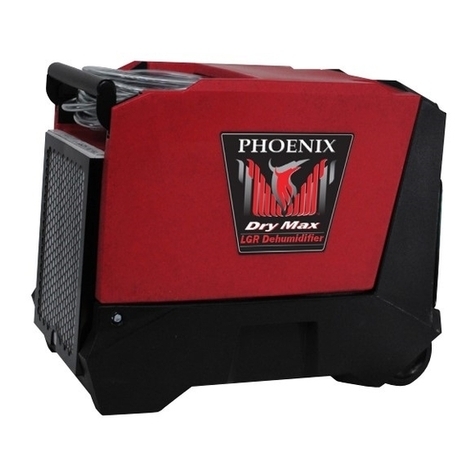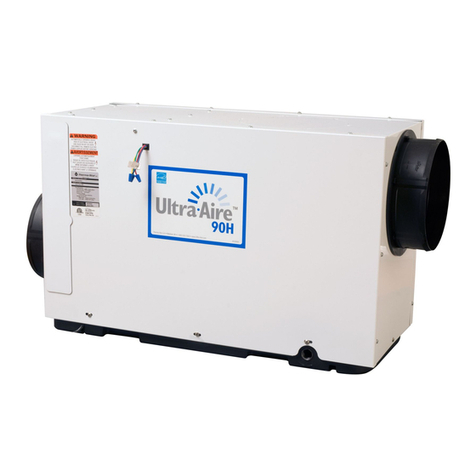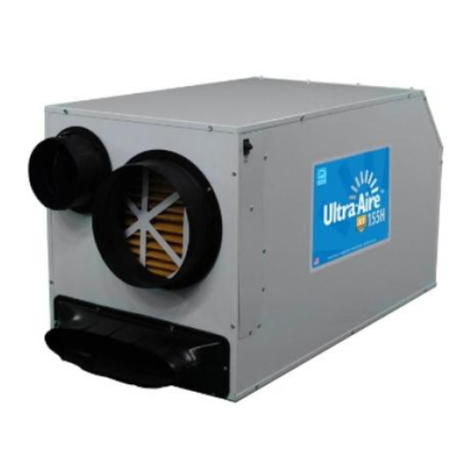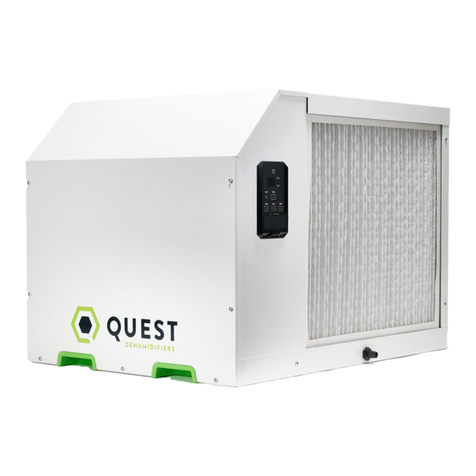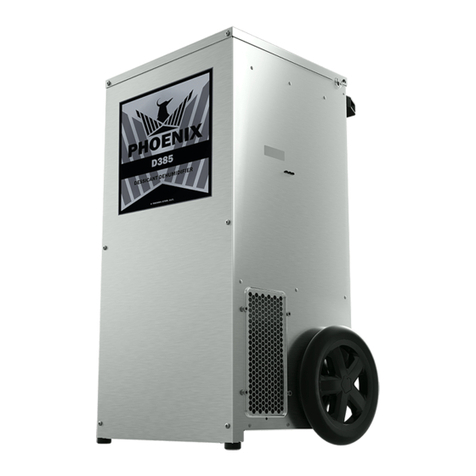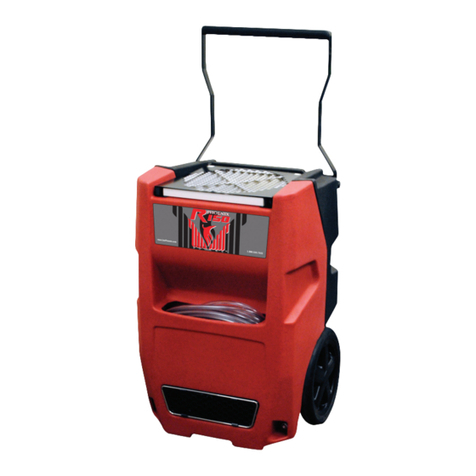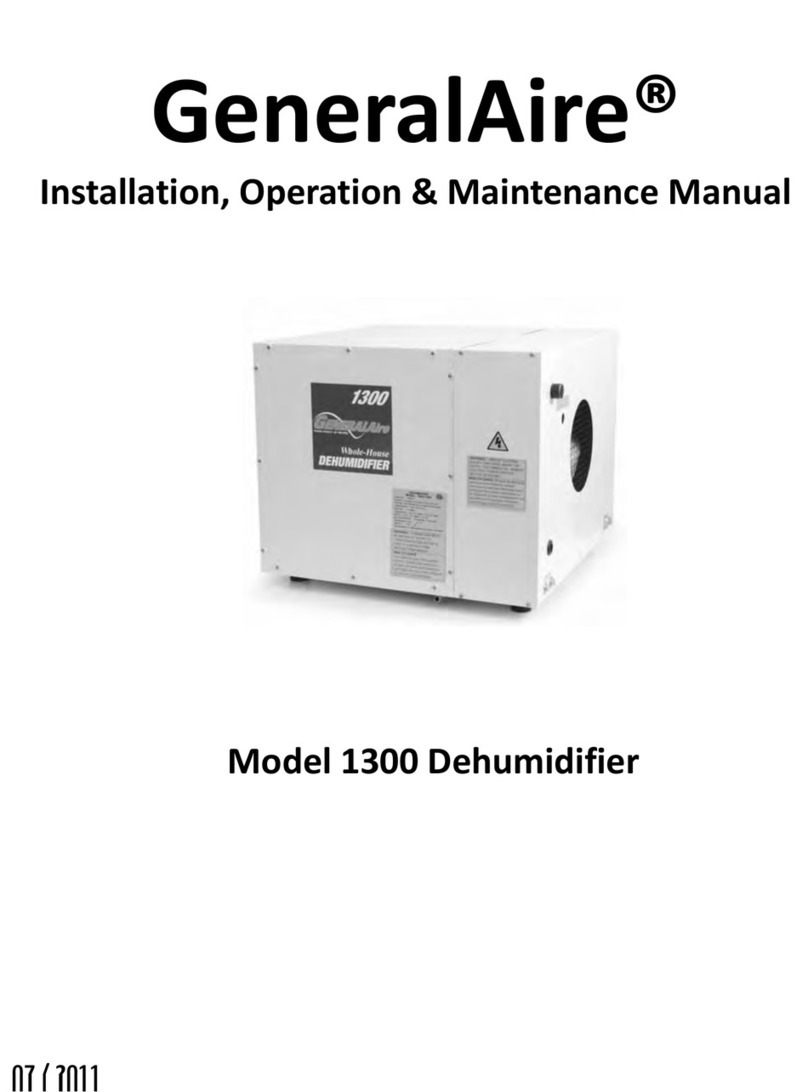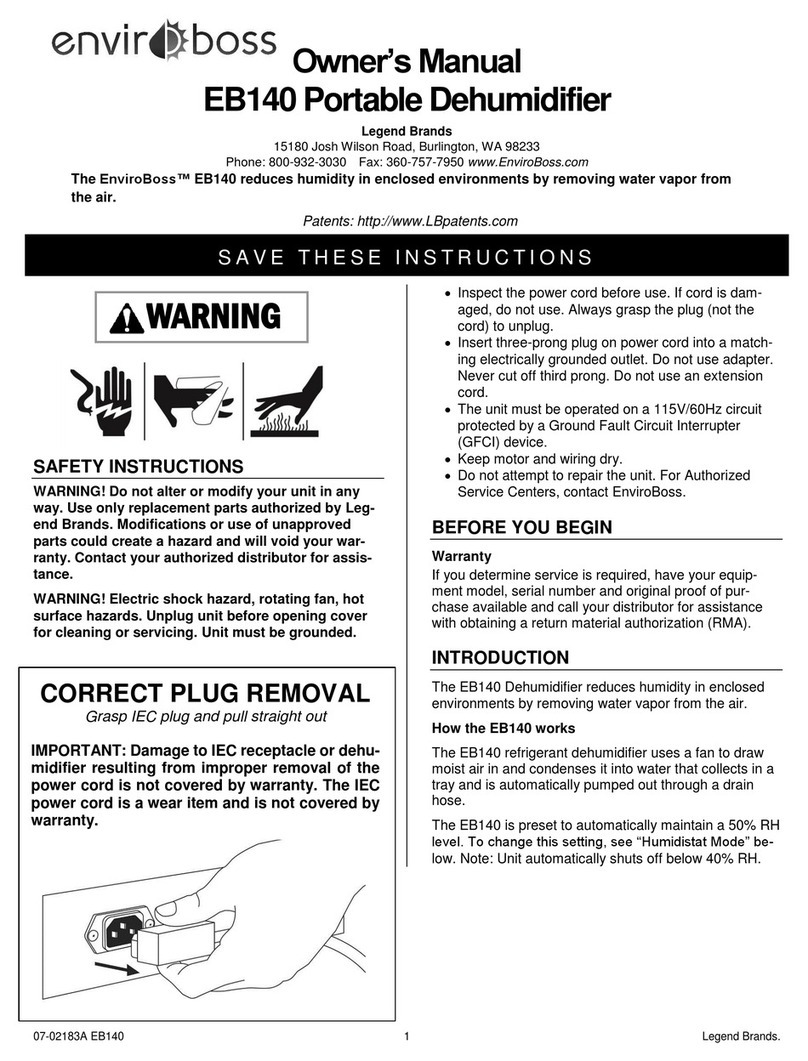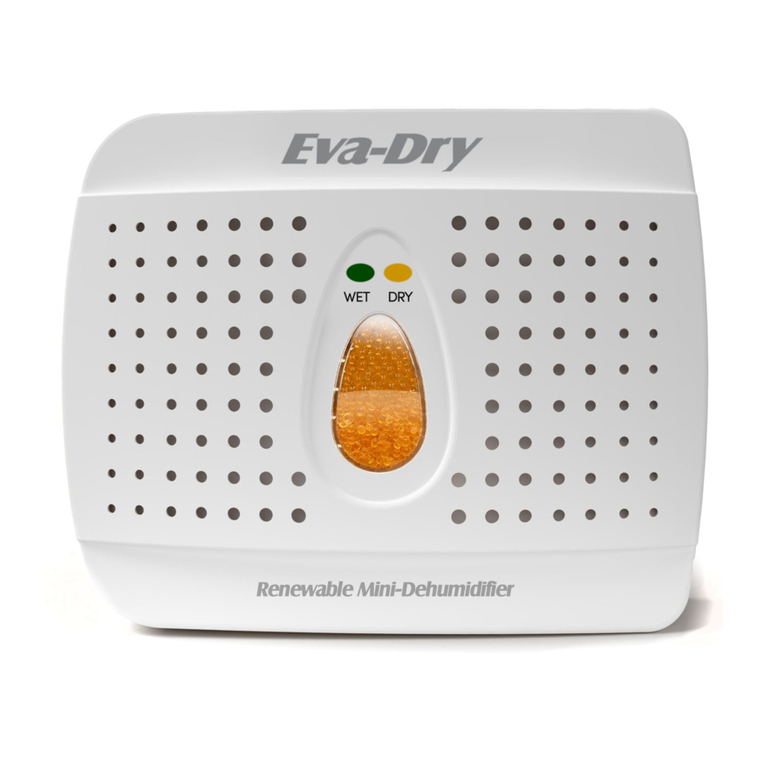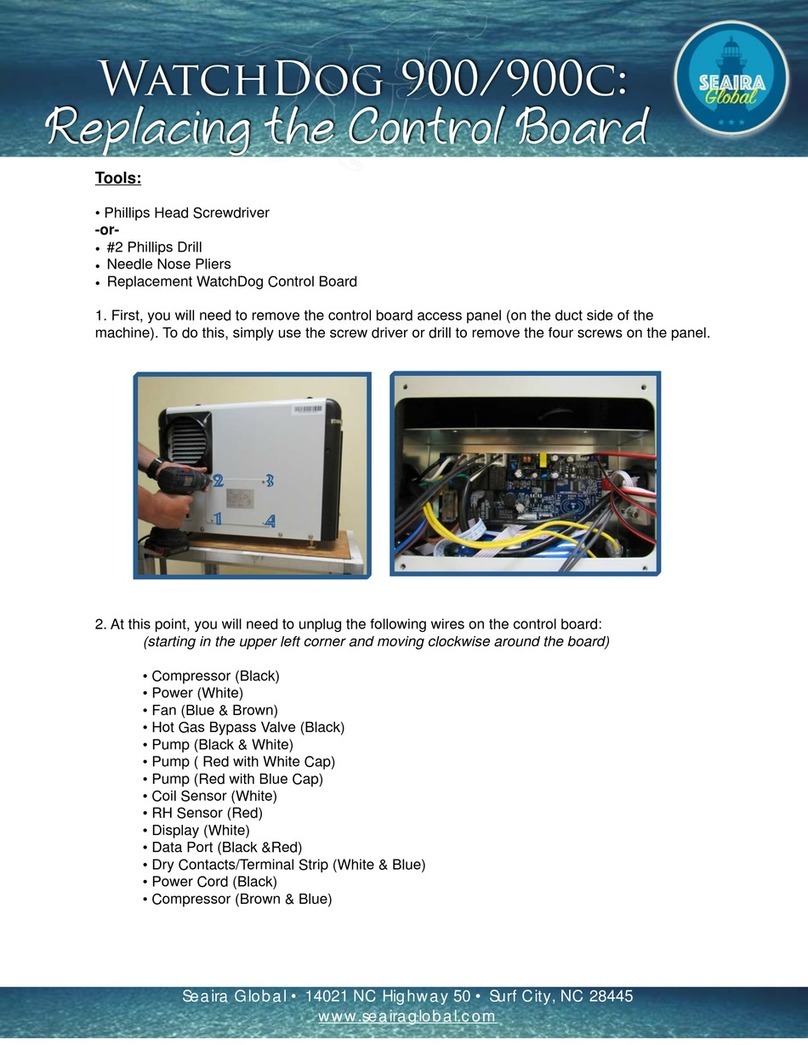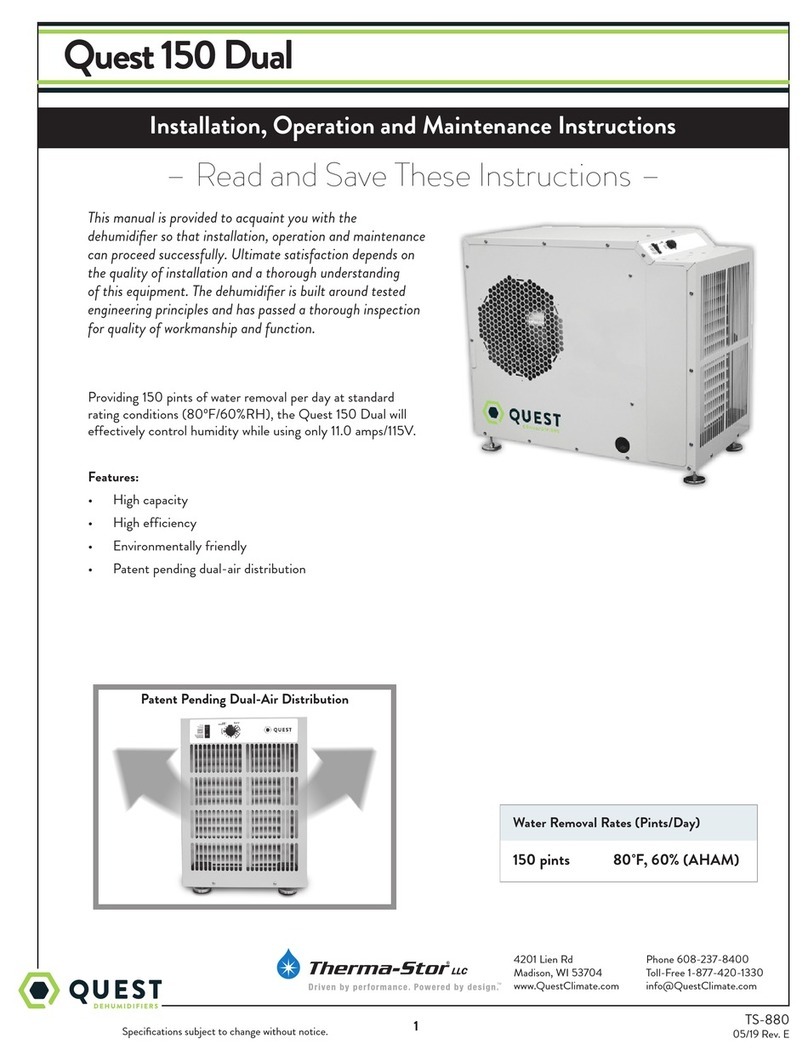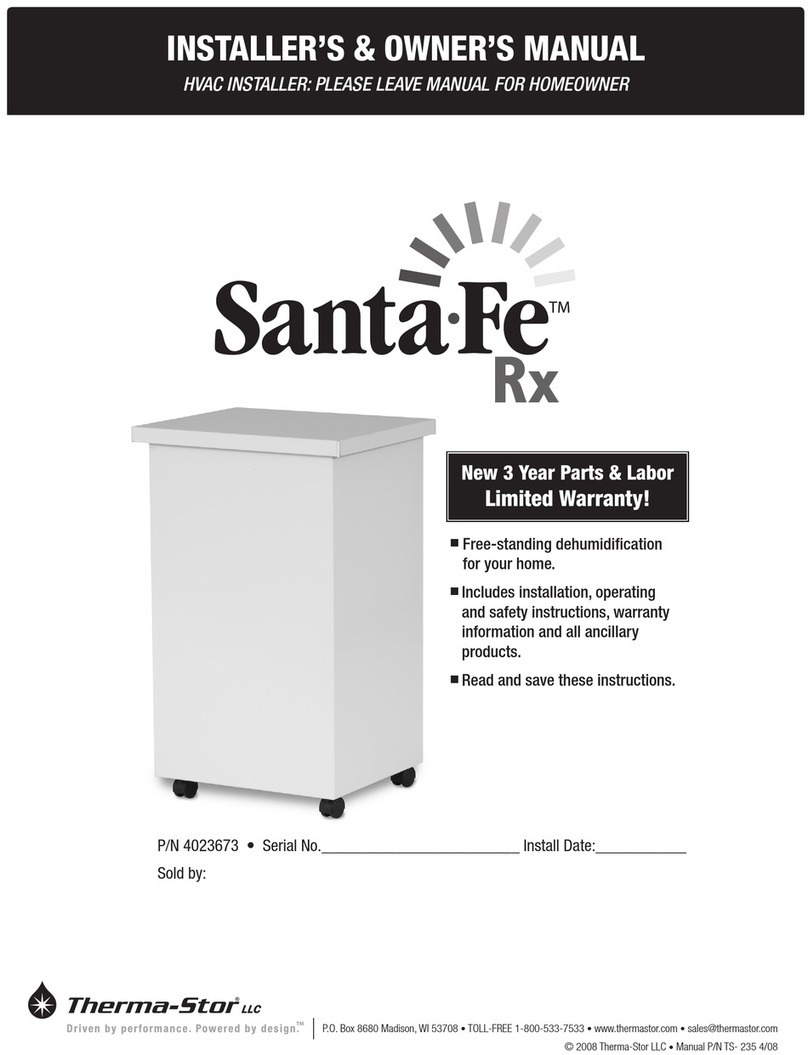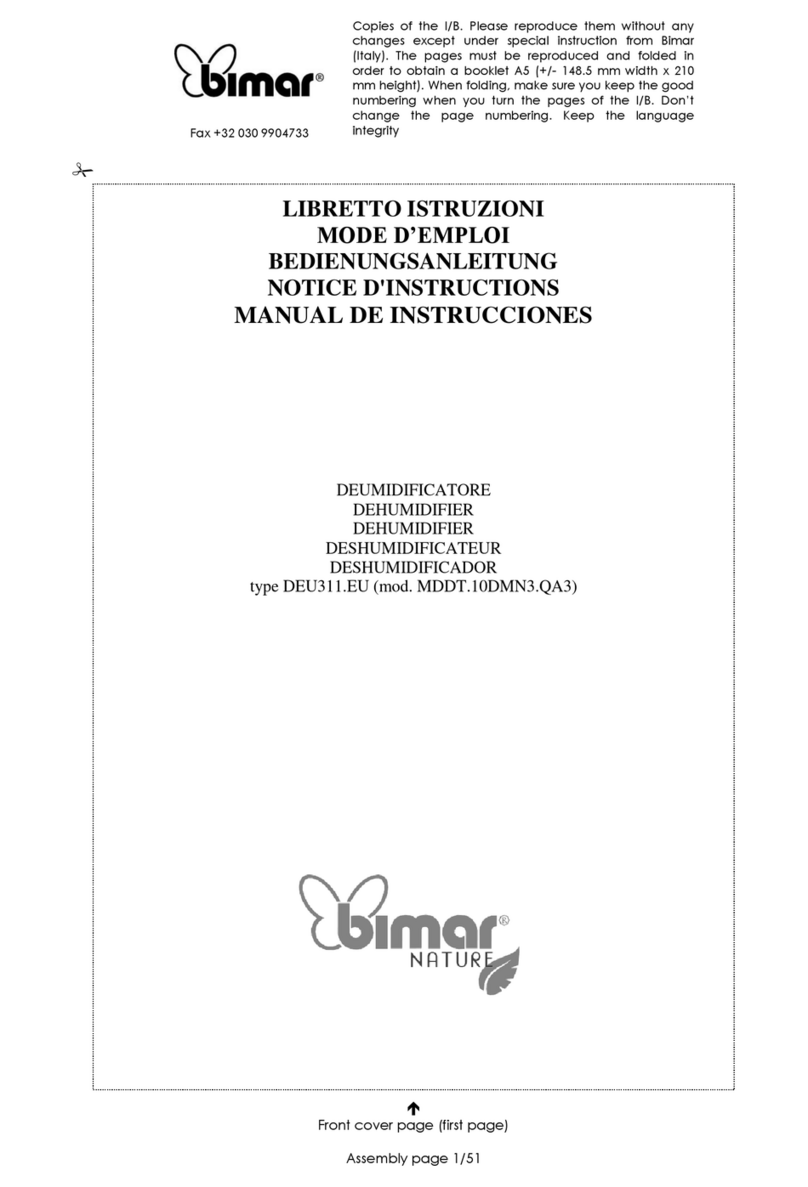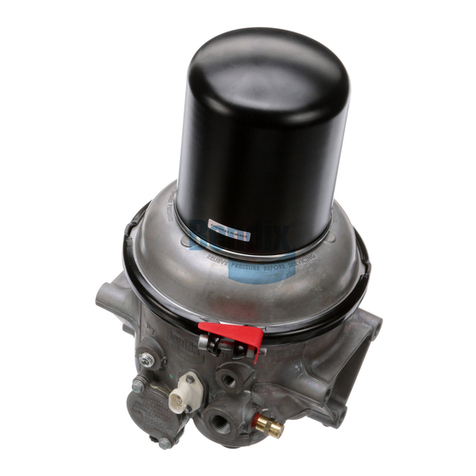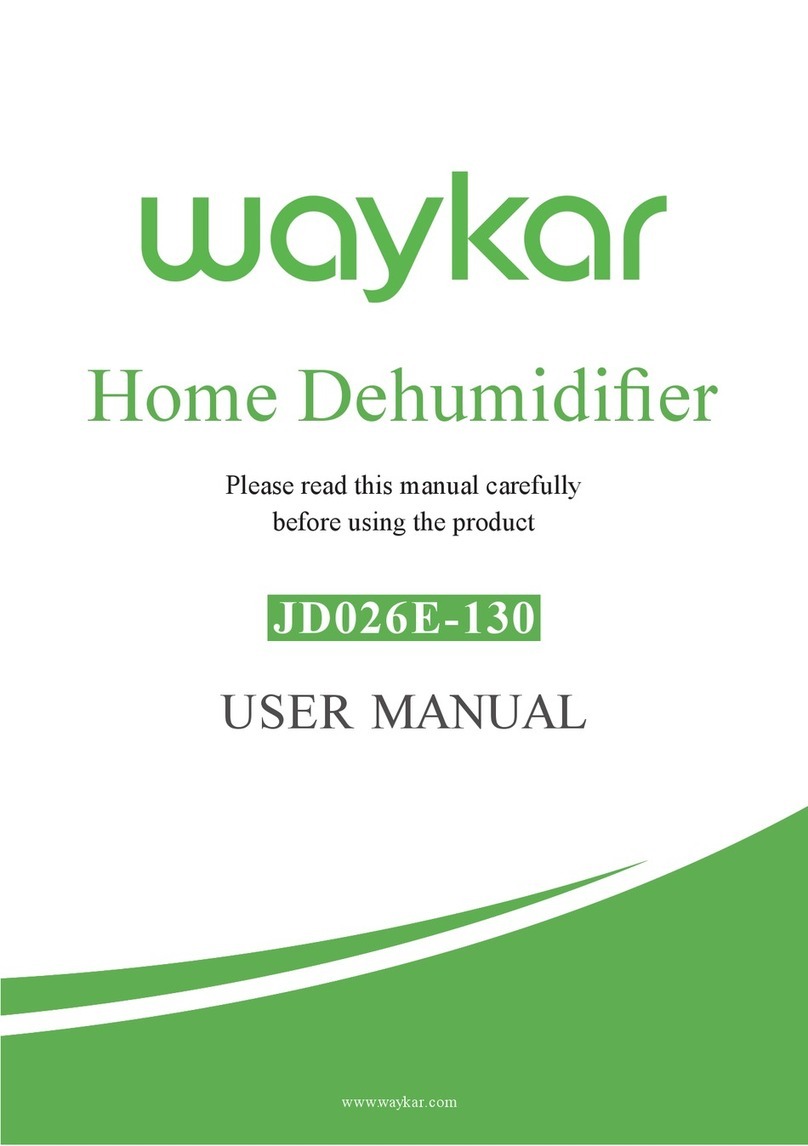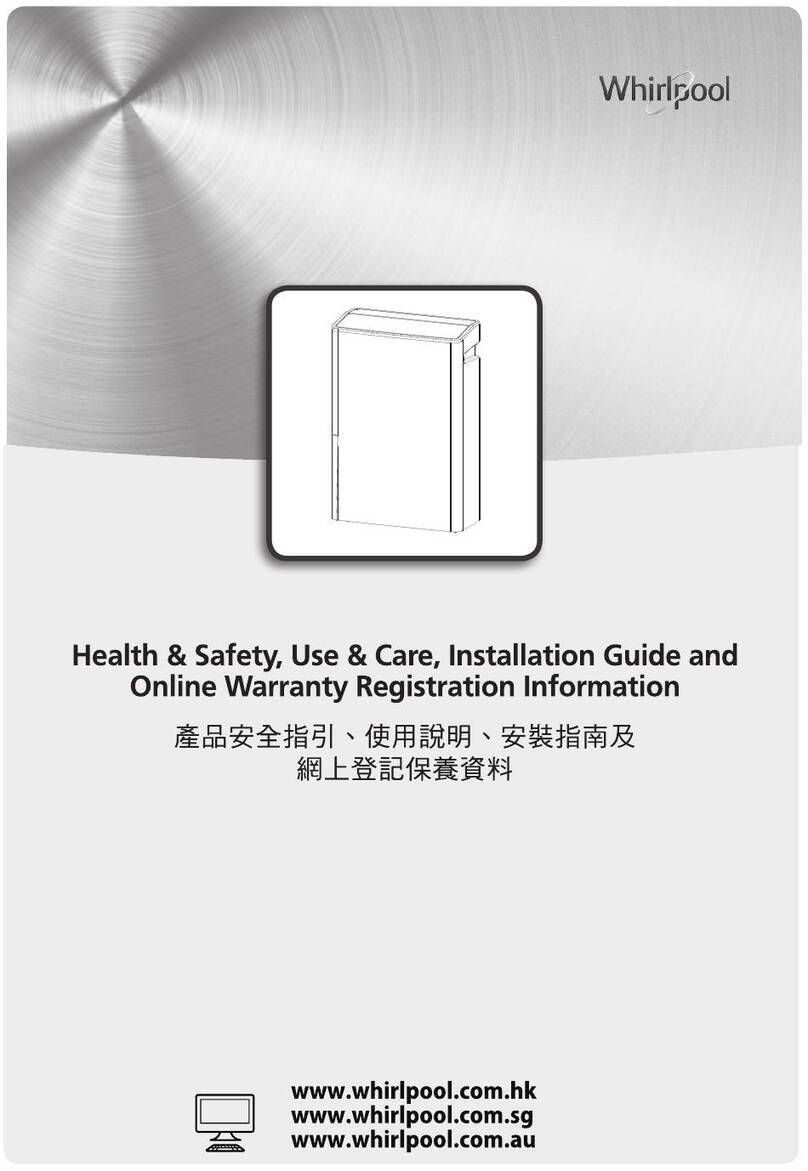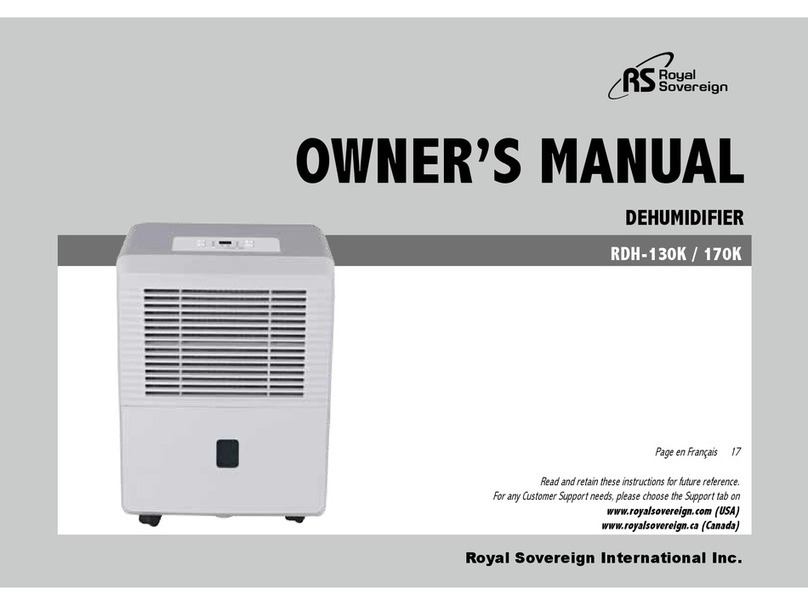
3
USEPHOENIX.COM
1.800.533.7533
3.1 Transporting
The Phoenix R125 features a high-impact roto-molded hous-
ing which protects the unit while loading into vehicles. The
unit was designed to stack 2 units high. For sturdy stack-
ing, keep the rotating handle in the upright position on the
bottom unit, place rotating handle in the down position and
“nest” the wheels of the top unit in the indentions of the bot-
tom unit to provide stability. This is recommended for stor-
age only. The units should be properly secured for transport.
The Phoenix R125 must always be upright when transported
by vehicle. It may be tipped onto its handle and back for
loading and moving by hand.
3.2 Electrical Requirements
The Phoenix R125 plugs into a common grounded outlet
on a 15 amp circuit. It draws 5.0 amps at 80°F, 60% RH.
If used in a wet area, a ground fault interrupter (GFI) is
required. If an extension cord is required, it must have a
minimum of 14 gauge conductors if 25 feet long or less and
12 gauge conductors if greater than 25 feet long.
3.3 Condensate Removal
The Phoenix R125 is equipped with an internal condensate
pump to remove the water that is condensed during
dehumidification. This allows the condensate to be pumped
up to 20 feet with the attached hose. If the condensate
must be pumped more than 20 feet above the unit, a
second pump must be added to relay the condensate.
The condensate pump automatically purges when the
reservoir is full. Use the PURGE button to manually remove
condensation.
3.4 Ducting
A wire duct collar is supplied to allow 10” lay-flat duct to be
attached to the Phoenix R125 outlet. Lay-flat plastic ducting
is available; see accessories table page 6. To attach ducting
to the wire duct collar, put the plastic duct end through
the collar center and roll the duct end outward so that it
overlaps the outside of the collar. The duct and collar may
then be quickly attached to the Phoenix R125 by snapping
the collar over the four exhaust tabs.
3.5 Defrost Cycle
If the low side refrigerant temperature drops due to exces-
sive frost formation on the evaporator coil and below the
temperature set point, the thermistor activates the solid-
state control and defrost light. The compressor is cycled off
and on by the thermistor temperature measurement. The air
mover will continue to run, causing air to flow through the
evaporator coil and melt the ice when the compressor is off.
When the air temperature and/or humidity increases, the
evaporator temperature will rise and the thermistor will end
the defrost cycle at the temperature set point.
3.6 POWER Button
Press the POWER button to turn the dehumidifier on or off.
When starting the dehumidifier the display will show the
accumulated hours. Press the POWER button again to turn
the dehumidifier off. The display will also power off.
3.7 PURGE Button
During normal operation the pump automatically cycles
when the reservoir is full. Press the PURGE button to remove
condensate manually from the reservoir. There are several
ways to manually remove water from the reservoir:
1. Press the PURGE button once and the pump will run for
20 seconds
2. Press and hold the PURGE button and the pump will run
for up to 30 seconds
3. Press the PURGE button while the dehumidifier is
powered off and the pump will run for 30 seconds.
Always manually purge the water reservoir before transport
or storage. Turn off the power and allow the plugged in
dehumidifier to rest 15 minutes before the final purge.
3.8 Hour Meter
The digital hour meter displays the amount of time the
dehumidifier has been turned on to the tenth of an hour.The
hour meter continuously cycles between total machine
hours and job hours every 3 seconds.Hours are stored in
memory even when the unit is unplugged.The previous
totals will be displayed next time the unit is powered on.
3.9 HOURS Button
Pressing the HOURS button displays the hour meter when
the unit is turned off but plugged into power. To reset job
hours, press and hold the HOURS button for 5 seconds when
the unit is operating.
3.10 DEFROST Light
The DEFROST light turns on when the unit is in defrost cycle
and indicates when the compressor is off.
Phoenix R125 control board.









